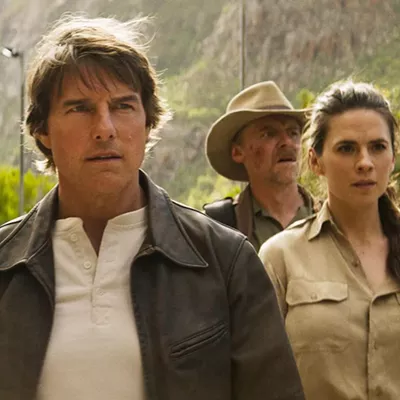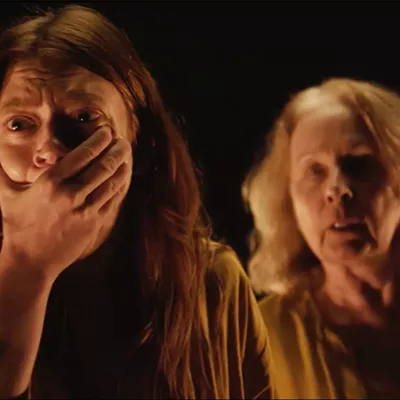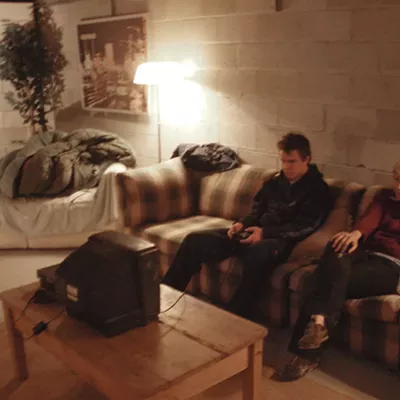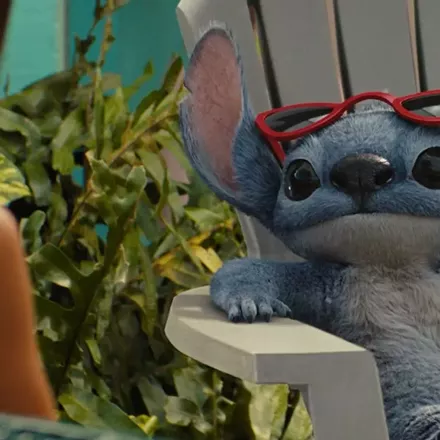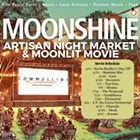Halloween is a time of two great traditions in America: eating lots of candy and having the bejeezus scared out of us. The candy part can be taken care of by a visit to the supermarket. But the best route to fright this year is at your local moviehouse, where Alien: The Director's Cut has just opened.
There's no overwhelming difference between this version and the original 1979 film about an interstellar space ship returning to Earth with a deadly creature onboard. Director Ridley Scott has trimmed out approximately six minutes, mostly beginnings or endings of scenes that ran a bit long. And, after finding boxes of deleted scenes in storage, he's added about six minutes of footage that weren't in the original release. There's now a brief fight between the two female crewmembers (played by Sigourney Weaver and Veronica Cartwright) and a scene that shows the fate of one crewmember -- Tom Skerritt -- who simply disappeared in the first one.
Aside from that and a crisp new, surround-sound audio mix, Alien remains Alien -- still one of the most menacing, frightening films ever made, the first of its genre to break the $100 million mark. And, by the way, most science fiction-horror aficionados consider it a classic.
"I was absolutely trying to make it as scary as possible," says Dan O'Bannon, who wrote the script. "As a kid, I grew up on pictures like The Thing and Body Snatchers and Forbidden Planet. Alien is sort of the decadent version of the '50s sci-fi-horror stuff."
Prior to Alien, O'Bannon had written many other scripts, including They Bite, a story of vicious insect-like creatures that come out of the ground. But only his script for Dark Star, a goofy comic science story, had made it to the screen, and by the mid-'70s, he was broke.
"I badly needed to sell a script," he recalls. "Alien was an idea that had been coming together from lots of bits and pieces over time. So I wrote it and it used many of the tropes and beats of They Bite, but it was in a setting that resembled Dark Star.
The script, finished in 1976, made the rounds of the studios and eventually ended up at 20th Century Fox.
"Then in 1977, Star Wars opened," says O'Bannon. "And Fox, who had not anticipated the success of it, wanted to be able to put another space ship movie into production really fast. As it turned out, Alien was the only other space ship movie lying on the desk there. That was how it got greenlighted."
But how did it achieve classic status? O'Bannon admits that he doesn't have a clue, that he regards films such as Gone With the Wind and The Bridge on the River Kwai as classics. But Tom Skerritt, who played Captain Dallas in the film, remembers that about halfway through shooting it, he and fellow cast member Yaphet Kotto were talking about the fact that it was going to be a classic.
"My sense of it throughout that whole period was that we were sitting on top of a great movie," says Skerritt. "It has that classic theme of all of our worst nightmares since we were children: of what's in that dark room or that space under the stairs in the basement.
"There was always a house in the neighborhood when you were a kid that scared the hell out of you," he adds. "Who lives in that house? You never saw anyone, and to this day you still remember it and you still don't know who lived there. Well, the alien lives in that house. It's that kind of sensibility that Ridley understood that we all have."
Alien is literally a dark film, shot in a murky style. And it's claustrophobic; although the space ship is huge, the cast is often stuck in cramped spaces. The musical score is minimal, with long stretches of silence, broken only by sounds of footsteps or water drops or, in one instance, a steady noise that appears to be the beating of a nervous person's heart. Once the tension sets in, it never stops, and crew members are picked off -- Ten Little Indians-style -- one by one.
But the film is most famous for a sequence in which the character named Kane (John Hurt) is killed when the creature first reveals itself. The reason the scene plays so well doesn't have that much to do with good acting. It's more on the line of the director messing with the actors. Skerritt explains.
"I was following Ridley around, watching him go about his business and seeing how he composed shots. I wanted to learn as much as I could working with him. I saw him putting the -- as I call it, "the indigestion scene" -- together. So I knew how it was going to work. I was aware of what was going to happen. What it would look like and how it would affect us, was left for the other actors to experience. Veronica Cartwright had no idea. She didn't want to know how the thing was set up, or quite what was going to happen."
He laughs at the memory and adds, "So the reaction you got from Veronica was as clean as it can be. She had no idea what the creature looked like, and no knowledge of what was coming."
That scene, more than any other, was what put Alien over the top, made it a memorable enough experience to spawn three sequels. And now there's strong talk of another one. If it happens, it will reunite Sigourney Weaver, who starred as Ripley, and Director Ridley Scott.
"Ridley has spoken to me in the last year about doing a fifth one," says Weaver. "Frankly, we're both so busy that we haven't had a chance to get together and talk about it much. But if we could get a good script, would I consider it? Just to work with him again, I would. It would be like coming home."
Scott sounds just as ready to have another go at the franchise.
"It's up to Fox, if they want to," he says. "But they've got to start diddling about now. Sigourney said to me, 'You start it off. Do you want to kill me? Once and for all?' And I said sure. So in that event, yes, I would get involved."



